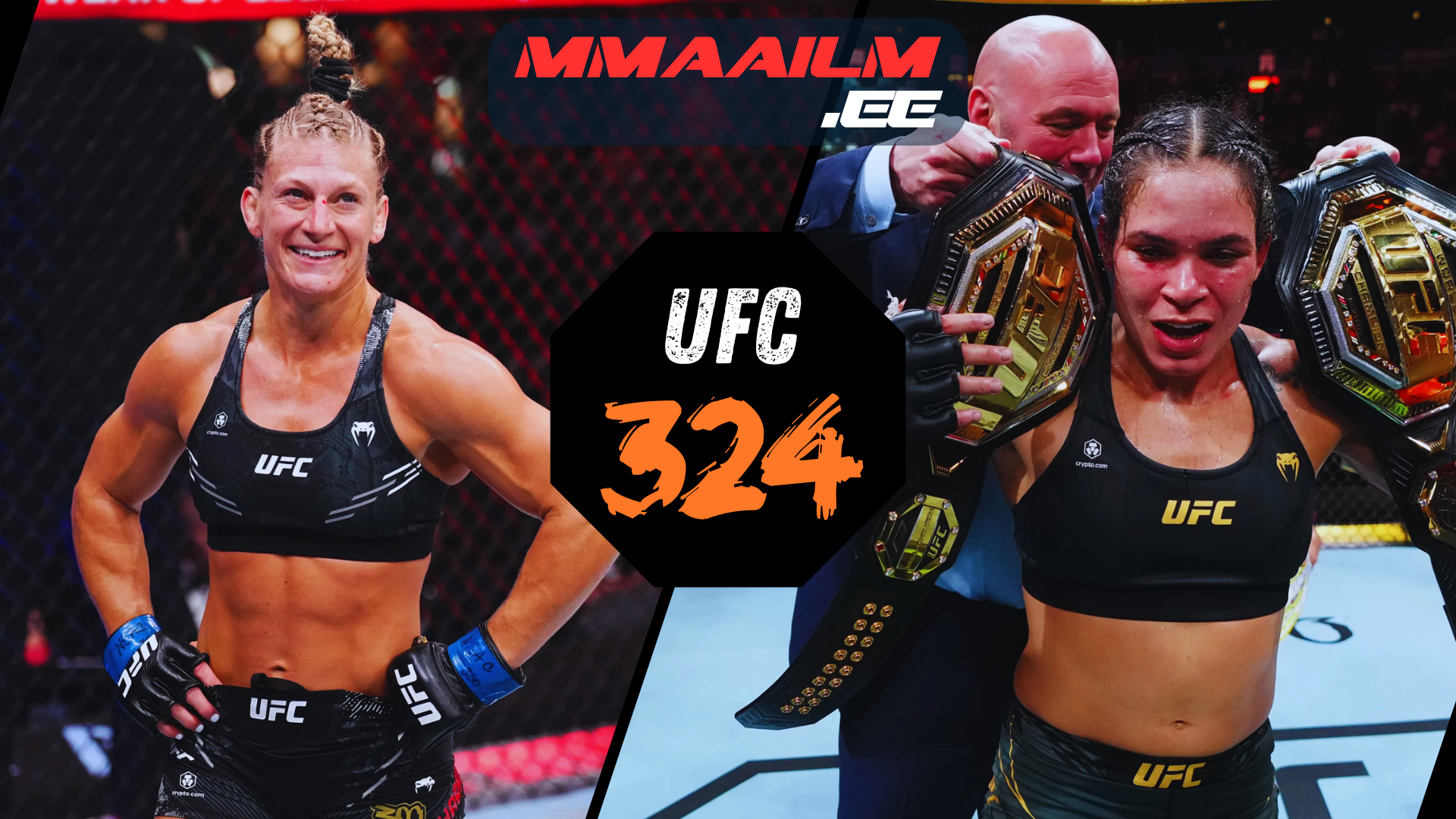How much do UFC fighters get paid? (2025 Guide)
How much do UFC fighters get paid? A complete 2025 guide
Curious about how much UFC fighters really earn? This guide explains show money, win bonuses, PPV points, Venum payouts, fines, and the new media-deal era so you can finally understand how UFC pay works in 2025.
Fast facts
- Pay model: per-fight (no base salary); typical deal = show money + win bonus.
- Entry-level range (typical): around $12k–$20k to show, matched as a win bonus.
- Top-tier: high six to seven figures per fight, plus upside from PPV points (historically) or equivalent star incentives.
- UFC bonuses: Fight of the Night & Performance of the Night (commonly $50,000 each, event-dependent).
- Venum (uniform) pay: tiered per UFC tenure/championship status, from low four figures up to five figures per event.
- Missed weight: typical purse fines of 20–30% (varies by commission) paid to the opponent.
- What’s changing: the 2026 broadcast shift (Paramount era) may reshape PPV-point-style upside, but fighters should still expect star-based incentives.
How much do UFC fighters get paid: the core building blocks
Every UFC contract is unique, but most follow a simple spine: show money for making weight and competing, and a matching win bonus if you get your hand raised. That’s why you often see figures like “$14,000 to show / $14,000 to win.” The promotion then layers on discretionary elements like event bonuses, tiered Venum payouts, and—at the elite level—revenue participation tied to star power.
Put differently, how much UFC fighters get paid hinges on three things: (1) your spot on the roster (debutant vs. ranked contender vs. champion), (2) event economics (Fight Nights vs. numbered cards), and (3) the specific incentives you’ve negotiated (bonuses, PPV points or their modern equivalents, side deals).
Realistic 2025 pay ranges by tier
Because the UFC doesn’t publish a universal scale, the best way to set expectations is by band, not a single number:
- Newcomers / early prelim tier: commonly low-to-mid five figures total if they win (e.g., $12k/$12k plus Venum money). Losing halves that total because you miss the win bonus.
- Established roster tier: mid-five to low-six figures total per fight, depending on placement and recent results. Some fighters negotiate flat “no win bonus” contracts in this band.
- Ranked contenders / former champs: consistent six figures per bout before bonuses, often with improved terms (bigger flat pay or bigger win bonuses) and stronger placement.
- Champions and needle-movers: base guarantees in the high six to seven figures plus upside. Historically that upside arrived as PPV points; with the media landscape evolving, equivalent star incentives (e.g., viewership or subscription-tied bonuses) are expected to carry that torch.
Remember, “disclosed purses” you occasionally see from commissions are often only the guaranteed portion. The real paycheck can be substantially higher after bonuses and star incentives.
Every paycheck component, explained
Show money & win bonus
This is the classic UFC deal: if you make weight and fight, you’re paid the show amount; if you win, you double it. A prospect on $14k/$14k earns $14,000 with a loss, or $28,000 with a win—before any extras.
Event-night bonuses ($50,000 typical)
Two Performance of the Night awards and one Fight of the Night (shared by both athletes) are the norm on numbered cards. The promotion sometimes expands the number of bonuses after stacked events. These $50k checks can eclipse a newer fighter’s purse.
Venum (uniform) payouts
Since 2021, fighters receive tiered uniform payments based on UFC tenure and title status. Newer athletes earn a few thousand dollars per appearance, with tiers stepping up over a career; title challengers and champions get more. Venum pay is separate from your purse and bonuses.
PPV points and star incentives
Historically, champions and select headliners could earn a percentage of pay-per-view revenue once a card passed certain buy thresholds—this is how top names reached seven figures. With UFC’s broadcast future moving away from the traditional U.S. PPV model in 2026, expect the concept to survive in spirit: elite athletes will negotiate viewership- or subscriber-driven incentives that function like modernized “PPV points.”
Fines for missing weight
If a fighter misses weight, athletic commissions typically levy a 20–30% fine on the offender’s purse and award it to the opponent. This deduction applies to the show (and often win) money, not to uniform or discretionary bonuses, unless specified.
Discretionary & back-end items
From time to time, fighters receive discretionary bonuses (“locker room” checks), appearance fees for media week, and performance-based renewals that bump the next contract. These are not guaranteed, but matter in aggregate.
Example paycheck math (win vs. loss)
Say a debuting athlete signs for $12,000 to show and $12,000 to win, plus a $4,000 Venum tier. If they lose: ~$16,000 before taxes and training costs. If they win and snag a Performance bonus: $12,000 (show) + $12,000 (win) + $4,000 (Venum) + $50,000 (bonus) = ~$78,000 gross. A single $50k award radically changes a new fighter’s take-home for the year.
Scale that up for a ranked lightweight on $100k flat (no win bonus) with a $6,000 Venum tier who headlines a Fight Night: ~$106,000 before any discretionary or viewership-tied add-ons. A champion headlining a premium card can multiply that number several times over with star incentives.
The media-rights era shift: what it means for fighter pay
In 2019 the UFC’s U.S. PPVs consolidated under ESPN+, entrenching the PPV model. In 2026, the promotion transitions to a new long-term deal with Paramount that’s expected to emphasize subscription distribution. Practically, fans will notice fewer (or no) domestic PPV add-ons, while headliners will look to tie their upside to new metrics (e.g., subscriber growth or event viewership). For athletes, the principle stays the same: star leverage earns star incentives, even if the technical lever moves from “PPV buys” to “platform performance.”
Why the same paycheck feels different across the roster
Two fighters can both earn $50,000 and take home very different amounts. Common expenses include manager fees (often ~5–10%), gym and coaching percentages, camp travel and housing, nutrition/weight-cut support, medicals, and taxes. A newcomer who loses on $12k show money may net far less after those costs than fans assume. Conversely, a champion’s star incentives can dwarf all of the above.
Negotiation levers fighters actually control
- Activity: quick turnarounds and short-notice saves can earn goodwill and better renegotiation leverage.
- Moments that move the needle: highlight finishes, viral callouts, and rivalries often matter as much as rankings.
- Placement: main-card and headlining slots usually correlate with stronger terms on the next deal.
- Championship status: the cleanest path to star incentives is holding gold—or beating a star in a big spot.
State of play in 2025
So, how much do UFC fighters get paid right now? For most of the roster, total per-fight earnings still fall in the low-to-mid five figures (loss) to mid-five/low-six figures (win plus bonus). For headliners and champions, six figures is the floor, and seven figures remains within reach when star incentives stack. The broadcast transition will tweak the mechanics in 2026, but the hierarchy and incentives—win, entertain, draw—aren’t going anywhere.
FAQ: how much do UFC fighters get paid
Do UFC fighters get a salary?
No. UFC fighters are independent contractors paid per bout, with additional event and uniform bonuses where applicable.
How much do debuting fighters make?
Commonly low five figures to show with a matching win bonus, plus a few thousand dollars from Venum uniform pay.
What is a PPV point—and is it going away?
Historically, PPV points gave champs/headliners a percentage of pay-per-view revenue beyond set thresholds. As distribution shifts in 2026, expect similar star incentives tied to new platform metrics rather than PPV buys specifically.
Are the $50,000 bonuses guaranteed?
No. They’re awarded at the promotion’s discretion after the event—usually two Performance of the Night and one Fight of the Night (shared).
What happens if someone misses weight?
Typically a 20–30% fine from the offender’s purse is transferred to the opponent; exact figures vary by commission and bout agreement.
MMAailm.ee is a premier MMA blog committed to delivering comprehensive analysis, up-to-the-minute news, and exclusive insights into the global landscape of mixed martial arts. Catering to passionate MMA enthusiasts worldwide, MMAailm.ee covers everything from fight night breakdowns and athlete performances to technical evolutions and behind-the-scenes narratives. Our mission is to bridge the gap between fans and the ever-evolving world of MMA through timely information and engaging content.
Latest articles
-
The Best Base for MMA: Wrestling, BJJ, or Striking?
-
Weight Cutting in MMA: The Science, Dangers, and Process Explained
-

UFC no more PPVs? How the new Paramount+ deal changes everything
-

Saudi expansion in MMA and the new geography of the sport
-

PFL Bellator merger: what actually changed?
-

Amanda Nunes vs Kayla Harrison UFC bantamweight title fight and the new era at 135


